Ear infections are a common ailment, especially in children, leading many to wonder, “Are ear infections contagious?” This question is crucial for parents, caregivers, and anyone affected by ear infections. In this comprehensive guide, we’ll explore the nature of ear infections, their causes, symptoms, treatment options, and preventative measures. By the end, you’ll have a thorough understanding of ear infections and how to manage them effectively.
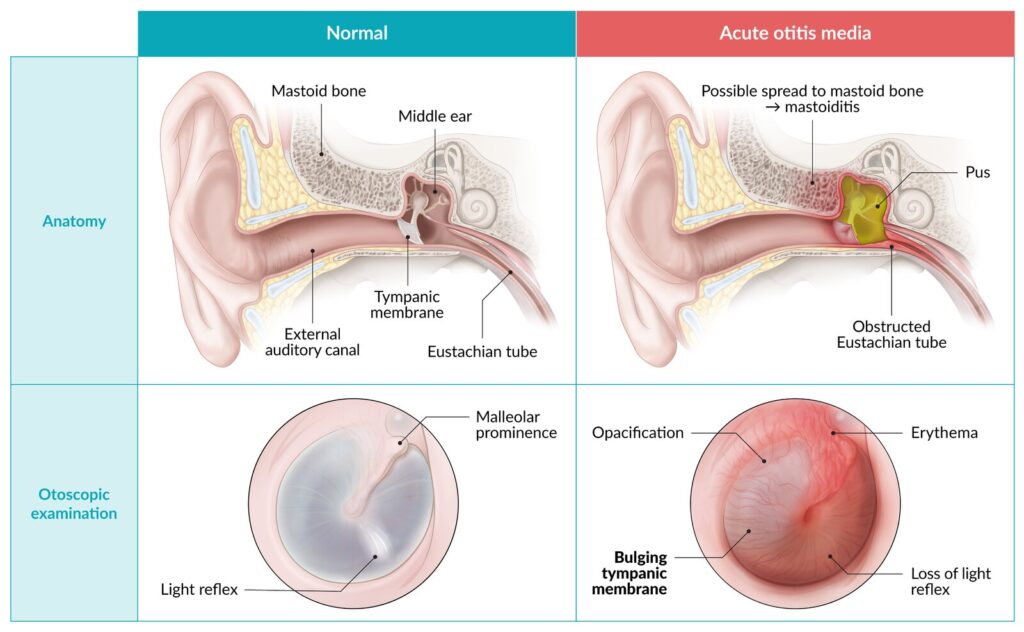
Understanding Ear Infections
Definition and Overview
An ear infection occurs when the middle ear becomes inflamed due to a bacterial or viral infection. The Eustachian tube, which connects the middle ear to the throat, can become swollen and blocked, leading to fluid buildup behind the eardrum.
Types of Ear Infections
Acute Otitis Media (AOM)
AOM is characterized by rapid onset of ear pain, fever, and hearing difficulty. It is caused by bacteria or viruses infecting the middle ear.
Otitis Media with Effusion (OME)
OME involves the accumulation of fluid in the middle ear without symptoms of infection. It often follows an acute ear infection.
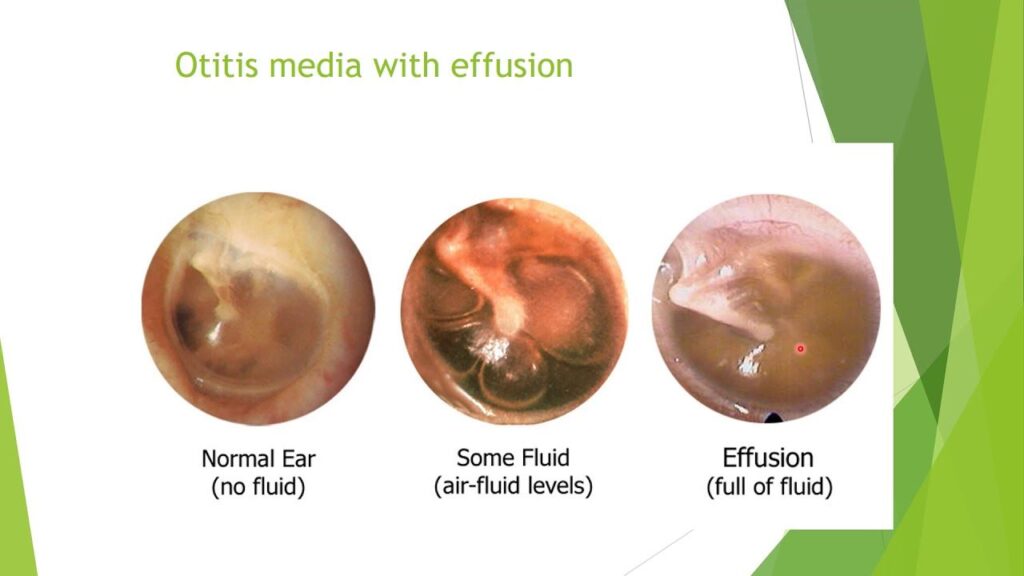
Chronic Otitis Media with Effusion (COME)
COME occurs when fluid remains in the middle ear for an extended period or recurs frequently, even without infection. This condition can lead to hearing difficulties.
Are Ear Infections Contagious?
Ear infections themselves are not contagious, meaning you can’t catch an ear infection from someone else. However, the viruses and bacteria that lead to ear infections can be spread from person to person. For example, if you contract a cold or the flu from someone, these infections can inflame your Eustachian tubes and lead to an ear infection. Practicing good hygiene, such as frequent handwashing and avoiding close contact with sick individuals, can help reduce the risk of spreading the germs that cause ear infections.
How Common are Ear Infections?
Ear infections, particularly middle ear infections (otitis media), are among the most frequently diagnosed illnesses in children. According to the National Institute on Deafness and Other Communication Disorders (NIDCD), five out of six children will experience at least one ear infection by their third birthday. Adults can also get ear infections, though they are less common.

Statistics and Prevalence
Ear infections are among the most common childhood illnesses. By the age of three, about 75% of children will have experienced at least one episode of AOM. While they are more prevalent in children, adults can also suffer from ear infections.
Age Groups and Demographics
Children aged 6 months to 2 years are most susceptible due to the size and shape of their Eustachian tubes and their still-developing immune systems. However, factors like allergies, respiratory infections, and exposure to tobacco smoke can increase the risk for all age groups.
Complications of Ear Infections
While most ear infections resolve without long-term consequences, some can lead to serious complications if left untreated. These include:
- Hearing loss: Persistent fluid in the middle ear can cause temporary or, in rare cases, permanent hearing loss.
- Speech or developmental delays: In children, impaired hearing can lead to delays in speech and language development.
- Spread of infection: Infections can spread to nearby tissues, including the mastoid bone, causing mastoiditis, a serious condition.
- Tympanic membrane perforation: Severe infections can cause the eardrum to rupture, leading to pain and potential hearing loss.
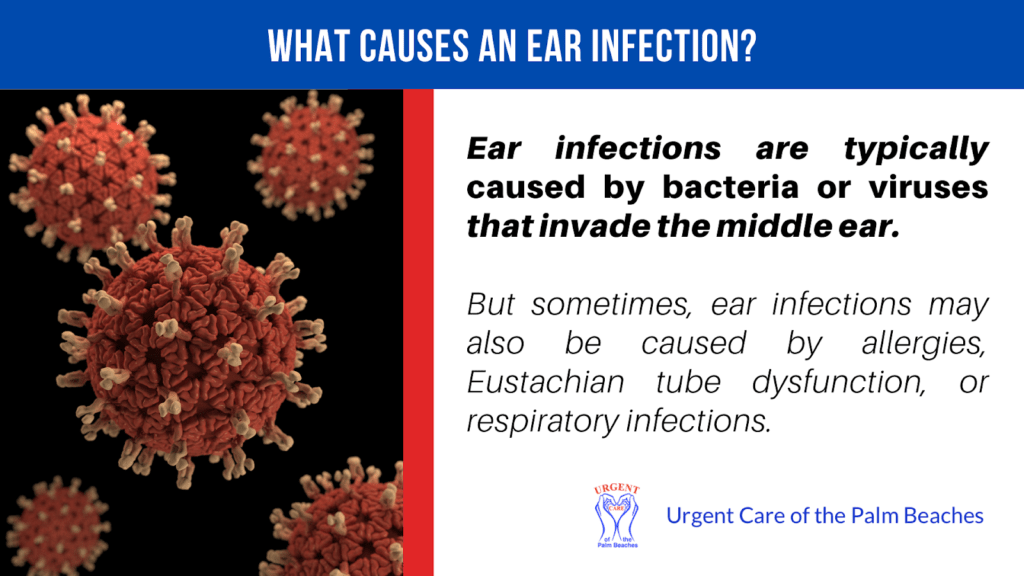
What Causes an Ear Infection?
Bacterial Causes
Bacteria such as Streptococcus pneumoniae and Haemophilus influenzae are common culprits in bacterial ear infections. These bacteria can enter the middle ear from the throat, especially following a cold or respiratory infection.
Viral Causes
Viruses, including those responsible for colds and flu, can also lead to ear infections. Viral infections can cause inflammation and fluid buildup, creating an environment for secondary bacterial infections.
Other Contributing Factors
Factors such as allergies, sinus infections, and even changes in air pressure can contribute to the development of ear infections. Poor air quality and secondhand smoke are also significant risk factors.
Common Triggers for Ear Infections
Environmental Factors
Exposure to cold weather, swimming in polluted water, and high altitudes can trigger ear infections by affecting the Eustachian tube’s function and promoting fluid retention.
Allergies and Sinus Infections
Allergic reactions can cause inflammation and blockage in the nasal passages and Eustachian tubes, leading to fluid buildup in the middle ear. Similarly, sinus infections can spread to the ear, causing similar problems.
Upper Respiratory Infections
Colds, flu, and other upper respiratory infections often lead to ear infections. The inflammation and congestion from these illnesses can block the Eustachian tubes, creating a breeding ground for infections.
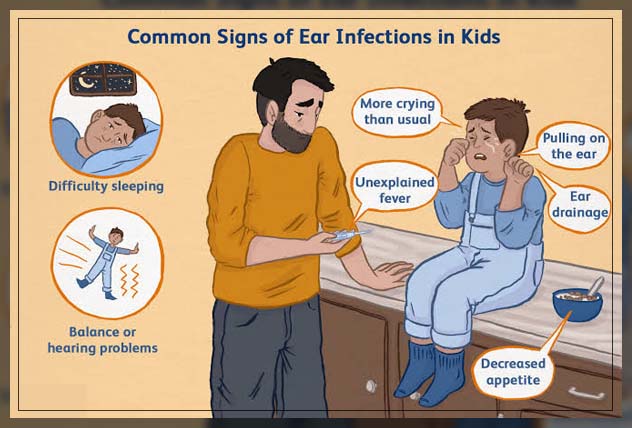
Symptoms of Ear Infections
Infants
- Tugging or pulling at the ear
- Crying more than usual
- Trouble sleeping
- Fluid draining from the ear
- Fever
- Irritability
- Difficulty hearing
Children
- Ear pain
- Complaints of hearing difficulty
- Fluid drainage from the ear
- Trouble sleeping
- Fever
- Balance issues
- Headache
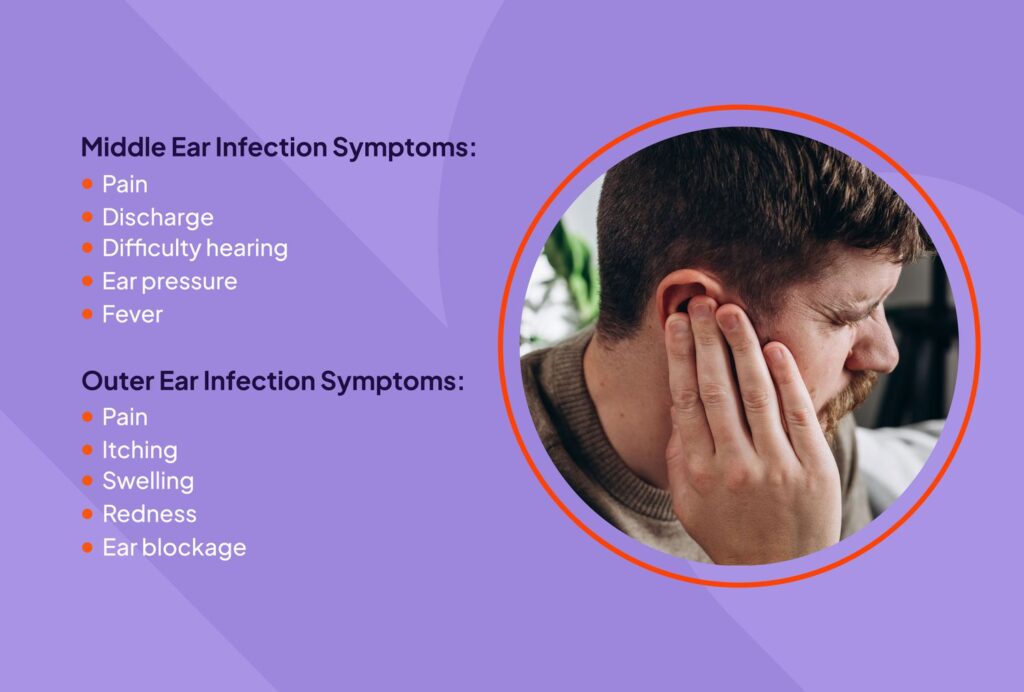
Adults
- Ear pain
- Hearing difficulty
- Fluid drainage from the ear
- Reduced hearing
- Ear fullness or pressure
- Fever (sometimes)
Why Are Children More Likely to Get Ear Infections?
Anatomical Differences
Children’s Eustachian tubes are shorter, narrower, and more horizontal than those of adults, making them more prone to blockage and infection.
Immature Immune Systems
Children’s immune systems are not fully developed, making them less effective at fighting off infections. This vulnerability, combined with frequent exposure to pathogens in daycare and school settings, increases their risk of ear infections.
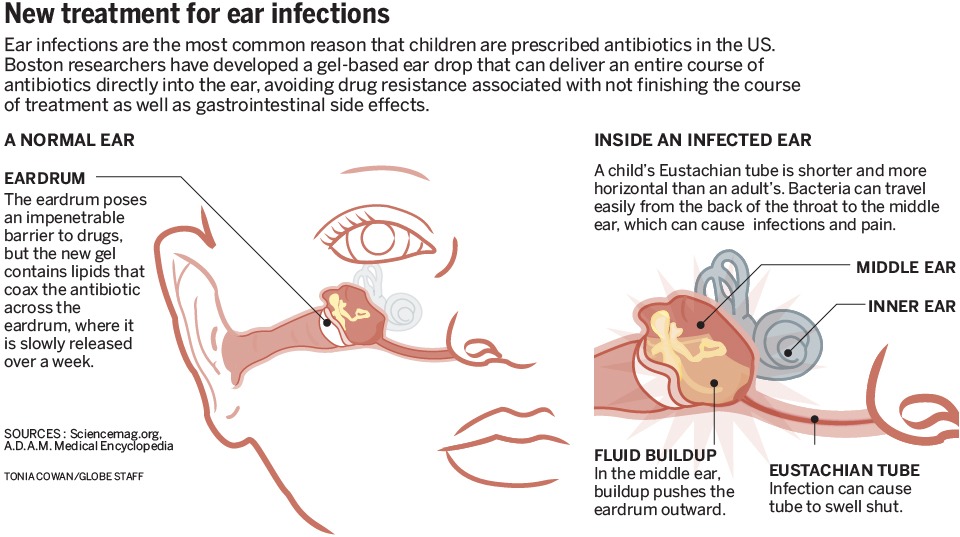
How Are Ear Infections Diagnosed?
Diagnosis of an ear infection typically involves:
- Medical History Review: Discussing symptoms and medical history with a healthcare provider.
- Physical Examination: Using an otoscope to look inside the ear for signs of infection.
- Tympanometry: Measuring the movement of the eardrum in response to changes in air pressure.
- Hearing Tests: Assessing any hearing loss associated with the infection.
Treating Ear Infections
Self-Care for Ear Infections
- Warm Compresses: Applying a warm cloth to the affected ear can help relieve pain.
- Pain Relievers: Over-the-counter medications like acetaminophen or ibuprofen can reduce pain and fever.
- Hydration: Drinking plenty of fluids can help thin mucus.
Medical Treatments
- Antibiotics: Prescribed for bacterial infections, though they are not effective against viral infections.
- Ear Drops: Used to relieve pain and inflammation.
- Surgery: In severe or chronic cases, procedures such as tympanostomy tube insertion may be necessary to drain fluid and prevent future infections.

Surgical Options for Severe Ear Infections
Myringotomy with Tube Insertion
A small incision is made in the eardrum to drain fluid, and a tiny tube is placed to ventilate the middle ear.
Adenoidectomy
Removal of the adenoids may be recommended if their infection or enlargement is contributing to chronic ear infections.
Tympanostomy Tubes
Tiny tubes are inserted into the eardrum to allow continuous drainage.

Preventative Tips to Reduce Risk
For Children
- Breastfeeding: Provides antibodies that help protect against infections.
- Vaccinations: Keep up-to-date with recommended vaccines, including the flu shot and pneumococcal vaccine.
- Avoiding Tobacco Smoke: Secondhand smoke increases the risk of ear infections.
For Adults
- Good Hygiene: Regular hand washing can prevent the spread of infections.
- Managing Allergies: Treating allergies can reduce the risk of ear infections.
- Avoiding Sick Contacts: Minimizing exposure to individuals with respiratory infections can help prevent ear infections.
When to Seek Medical Attention
Signs That Require a Doctor’s Visit
Seek medical attention if symptoms persist for more than a few days, if there’s severe pain, or if there’s fluid drainage from the ear. Fever, dizziness, and significant hearing loss are also red flags.
Emergency Symptoms
Immediate medical attention is necessary if there are signs of severe infection, such as high fever, stiff neck, severe headache, or swelling around the ear. These could indicate a more serious condition like mastoiditis or meningitis.
Summary: Are Ear Infections Contagious?
Ear infections are a prevalent issue, particularly among children, but they can affect people of all ages. Understanding the causes, symptoms, and treatment options is crucial for managing this condition effectively. By taking preventative measures and seeking timely medical attention, the complications of ear infections can be minimized, ensuring better ear health for you and your loved ones.
Frequently Asked Questions (FAQs)
Are Ear Infections Contagious?
Ear infections themselves are not contagious, but the viruses and bacteria that cause them can be spread from person to person. Practicing good hygiene and avoiding close contact with sick individuals can help reduce the risk.
Can Ear Infections Cause Hearing Loss?
Yes, if left untreated, ear infections can lead to temporary or even permanent hearing loss due to damage to the middle ear structures.
How Long Does an Ear Infection Last?
With appropriate treatment, most ear infections resolve within one to two weeks. Chronic or recurrent infections may require longer treatment periods and possibly surgical intervention.
What Can I Do to Prevent Ear Infections in My Child?
Breastfeeding, keeping up with vaccinations, avoiding tobacco smoke, and practicing good hygiene are effective ways to prevent ear infections in children.
Can Adults Get Ear Infections Too?
Yes, while less common than in children, adults can still get ear infections. Factors such as allergies, sinus infections, and upper respiratory infections can increase the risk.
